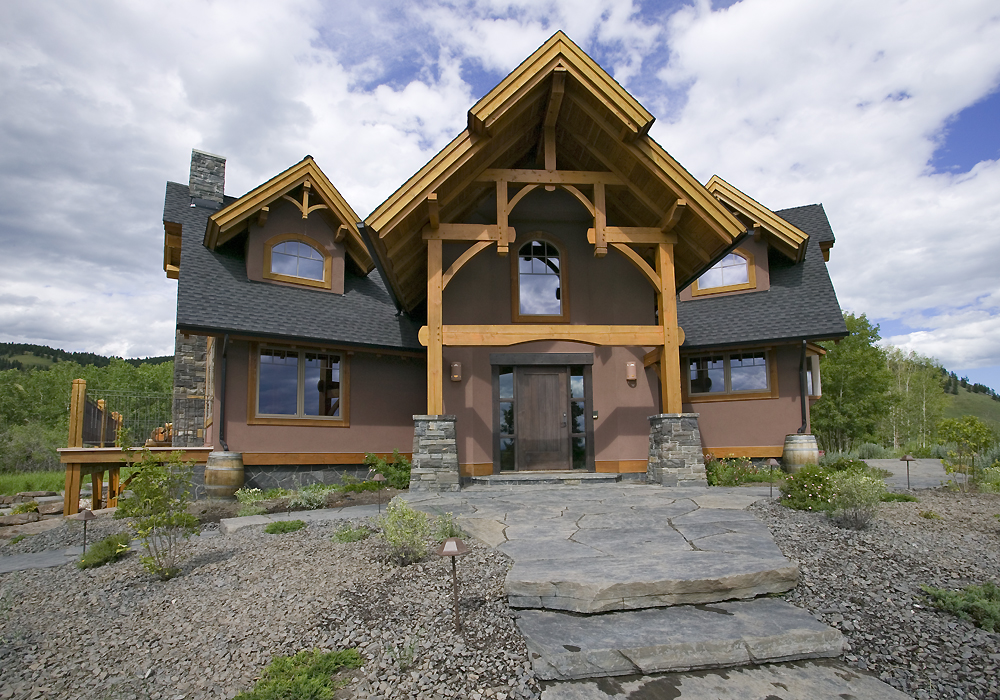
In recent years, if you met with a stockbroker to discuss promising investment opportunities, they might have suggested buying shares in a technology company such as Microsoft, Apple, Google or Facebook. Your financial portfolio may comprise equities, mutual funds, bonds and commodities like gold and silver. You may even invest in real estate. But have you ever considered investing in timber? This basic commodity of real estate development may not be as “sexy” a commodity as gold, but timber is steady, reliable and easy to invest in. It is, after all, the material behind today’s office building and house timber frame construction. And the benefits of investing in this often overlooked commodity may surprise you.
What is Timberland Property?
Merriam-Webster defines timberland as “wooded land especially with marketable timber.” The first sawmill in the U.S. was in 1623, and since then, landowners have made money from selling their timber. However, investors didn’t pay much attention to timber until the 1974 Employee Retirement Income Security Act (ERISA). This law encouraged institutional investors, managing portfolios on behalf of their clients, to diversify with other investment products such as real estate holdings. This includes timberlands, which provide the raw materials for timber house construction.
If you’re thinking about investing in land and building a new home on it, to enjoy all that land ownership has to offer, consider a sustainable timber frame home. At Hamill Creek Timber Homes, you’ll find a wide variety of timber frame house construction plans. The company has specialized in unique, energy-efficient timber framed homes since 1989. Their timber frame home kits include all the materials and services you need for your timber frame project.
The Recent History of Timberland Investment
Changes in the tax laws encouraged U.S. forest product companies to sell their timberlands to tax-exempt investors. Through the years, they continued to sell excess timberlands, using the profits to invest in their facilities. Timberlands were purchased primarily by charitable foundations, pension funds, university endowments and wealthy individuals, with most of them managed by Timber Investment Management Organizations (TIMOs).
What is a TIMO?
A TIMO is a management company that helps investors locate and purchase timberlands as well as manage timberland investment portfolios. These companies find, analyze and acquire timberland investment properties that provide the best value for their clients. They manage the timberland property so that it realizes the greatest returns. Investors use a TIMO as a “middle-man” to simplify the timberland investment process.
Currently, the four largest TIMO organizations are Forestland Group, Resource Management Service, Hancock Timber Resource Group and Campbell Global. These companies manage more than 15 million acres of timberland for their clients.
What is a Timber REIT?
Instead of outright selling of their timberlands, a forest product company may decide to move their timberland holdings into a Real Estate Investment Trust (REIT), for a greater tax advantage. REITs can own offices, hotels, hospitals, malls, apartments and other properties. Timber REITs own land, turning profits by harvesting the trees. Four of the largest REITs are Weyerhaeuser, Rayonier, Potlatch and Plum Creek. Financial services company The Motley Fool discusses the advantages and risks of investing through a timber REIT. The tax advantages and disadvantages of REITs are outlined in a briefing by the USDA Forest Service.
Timber EFTs – Exchange Traded Funds
Investors interested in obtaining a position in timber can also invest in an Exchange Traded Fund (EFT), which is made up of many timber companies, as well as businesses that produce products made from timber.
Is Timber a Good Investment?
There are several reasons why investing in timber is a smart decision, for financial reasons as well as for personal use and enjoyment of the land.
- Timberland returns are comparable to stocks, with less risk and volatility. The NCREIF Timberland Index measures the performance of U.S. timberland investment. This index has shown that in the past 20 years, timberland returns have nearly equaled those of equities, indicated by the S&P 500, with half the volatility.
- A timberland investment is an effective hedge against inflation. Historical data shows a positive correlation. In the past century, timber prices have risen faster than prices for other products. According to renowned investor Jeremy Grantham, timber prices have stayed at a level that’s 3% greater than inflation.
- Timber prices are impacted by different economic and market factors than other assets. This makes timberland an attractive addition to a diversified portfolio. Unlike gold and stocks, trees continue to grow, in volume and in value, regardless of the current world economic conditions. If timber prices are less favorable, timberland can be left to grow and increase in value until market conditions improve.
- Premium land is valuable in many ways. When a forest is young, licenses can be granted to fishermen and hunters, and there can be profits from tree materials such as maple syrup and pine needles. Older trees can be harvested for timber.
- Timberland is easy to invest in. For investors who don’t want to own land or don’t have the necessary capital, there are other ways to reap the benefits of owning timberland, such as by investing in timber REITs and ETFs.
Timberland Investment and a Sustainable Future
With the challenges of a changing climate and the growing urgency to remove carbon from the atmosphere, forest managers, climate scientists and investors have joined to find a natural climate solution that would help reduce carbon emissions. This exciting merger of science, forest management and finance may transform timberland investment into an effective means of addressing urgent global challenges such as climate change, water supply, biodiversity and rural economic development.